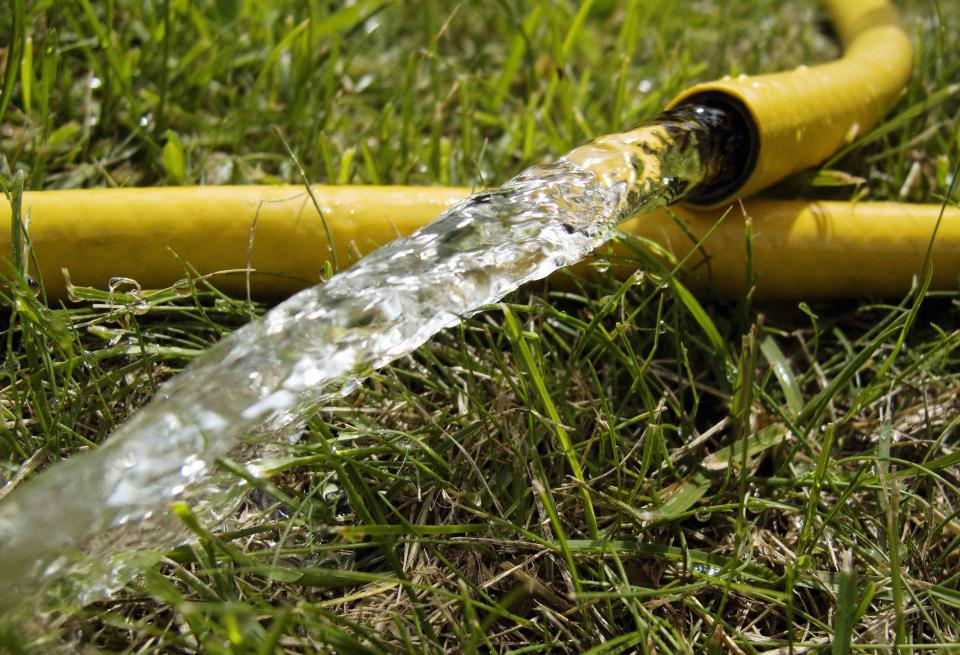How to Choose the Right Garden Hose: A Step-by-Step Guide
We'll guide you to choosing the right garden hose for your needs

Glasshouse Images / Getty Images
Whether you're a seasoned gardener or just starting to cultivate your green thumb, selecting the right garden hose can make all the difference in keeping your plants thriving and your lawn lush.
With a plethora of options available, it's easy to feel overwhelmed, but fear not! In this comprehensive article, we'll dive into the world of garden hoses, exploring different types, materials, and features to help you make an informed decision.
Standard Garden Hose Sizes
When it comes to choosing the right garden hose, size matters. Here are the standard garden hose sizes you'll typically encounter:
5/8 inch: This is the most common diameter for residential garden hoses. It strikes a balance between water flow and pressure, making it suitable for most general watering tasks, such as watering plants, washing cars, and filling pools.
3/4 inch: This is a larger diameter hose that delivers higher water flow rates. It's ideal for larger yards, commercial use, and applications that require more water volume, such as watering large gardens or lawn areas.
1/2 inch: This hose has a smaller diameter and is lightweight and flexible. While they may not deliver as much water volume as larger hoses, these are great for smaller gardens, patio watering, and tasks that require maneuverability.
1.25 inch: These hoses are typically used for industrial or commercial purposes, such as irrigation systems or construction sites. They provide high water flow rates and are designed to withstand heavy-duty use.
What to Consider When Buying a Garden Hose
Choosing the right garden hose involves considering several factors to ensure it meets your needs and preferences:
Material: Garden hoses are commonly made from rubber, vinyl, or a combination of both. Rubber hoses are durable and flexible but can be heavier. Vinyl hoses are lightweight and more affordable but may be prone to kinking and cracking over time.
Length: Hoses should be a little longer than the length from the faucet to the further end of a yard. If the length of a hose seems unmanageable, a hose reel makes moving it simple. Remember to account for any obstacles or corners that may require extra length.
Flexibility: Look for hoses with good flexibility, especially if you'll be maneuvering around obstacles or tight spaces. Hoses with multiple layers or reinforced construction tend to be more flexible and less prone to kinking.
Durability: Consider the hose's durability and resistance to kinking, cracking, and UV damage. Reinforced hoses with multiple layers, such as those with mesh or polyester reinforcement, are more durable and less likely to burst under pressure.
Fittings and Couplings: Check the quality of the hose fittings and couplings, as these are common points of failure. Brass fittings are durable and resistant to corrosion, while plastic fittings may be more prone to breakage.
Diameter and Water Pressure: Higher water pressure may require a larger diameter hose to maintain adequate flow rates and prevent pressure drop. Consider the water pressure requirements for your watering tasks.
Storage and Maintenance: Think about how you'll store and maintain the hose when not in use. Hoses with coil or flat designs are easier to store and less likely to kink. Additionally, consider features such as antimicrobial coatings to prevent mold and mildew growth.
By considering these factors and choosing a garden hose that meets your specific needs, you can ensure efficient watering and enjoy a lush, healthy garden all season long.
Common Types of Garden Hoses and Their Uses
Standard Vinyl Garden Hose: These are commonly used for general watering tasks in small to medium-sized gardens. It's a lightweight and affordable option for occasional use, however, it’s not as durable as other types and may kink easily.
Rubber Hose: Ideal for heavy-duty watering tasks and commercial uses. This material hose is durable, flexible, and resistant to kinking. It’s also suitable for high-pressure applications and hot water use.
Expandable Hose: This hose is designed to expand in length when water is turned on and contract when water is turned off. Compact and lightweight for easy storage, this garden hose is great for small gardens, patio watering, and RV use.
Soaker Hose: This is a perforated or porous hose that delivers water directly to the soil along its length. It’s ideal for watering garden beds, flower borders, and vegetable gardens. Its design also helps conserve water by minimizing evaporation and runoff.
Flat Hose: Compact and lightweight, this hose lays flat when not in use for easy storage. It’s suitable for temporary use, such as washing cars or boats, but it may not be as durable as other types and may have lower water flow rates.
Coiled Hose: This is a flexible hose that retracts to its original shape after use. It’s great for small gardens, patio watering, and container gardening. It also offers tangle-free storage and easy maneuverability.
Heavy-Duty Reinforced Hose: These hoses are reinforced with multiple layers of mesh or polyester for added strength and durability. Suitable for commercial use, industrial applications, and high-pressure watering tasks, they’re resistant to kinking, abrasion, and UV damage.
By considering factors such as material, length, flexibility, and intended use, you can ensure that your hose meets your needs and helps you achieve gardening greatness. So, whether you opt for a durable rubber hose, a convenient expandable hose, or a specialized soaker hose, may your watering endeavors be fruitful, your plants flourish, and your garden thrive.
Read Next: 15 Creative Ways to Store Your Garden Hose
Read the original article on The Spruce.

